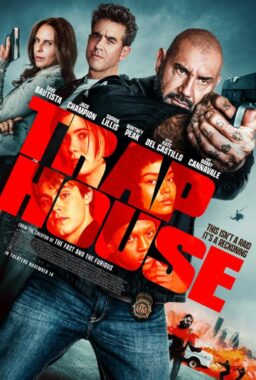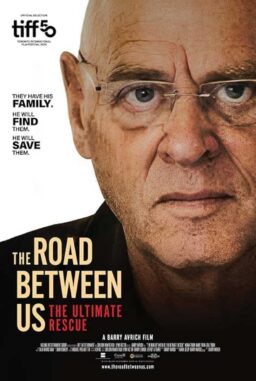Every October, it’s something of a tradition to watch as many horror films as one can possibly manage. I of course support the mainstays like “The Shining” or “A Nightmare on Elm Street,” but I would like to recommend maybe my favorite series of horror films, the nine pictures produced by the great Val Lewton for RKO between 1942 and 1946.
I first heard about Lewton through Harlan Ellison’s Watching, a collection of the short story writer’s film criticism. In one essay, he describes at length the most suspenseful and beautifully constructed sequence in “The Leopard Man” (1943). Directed by Jacques Tourneur and adapted by Ardel Wray and Edward Dein from the novel Black Alibi by the great pulp writer Cornell Woolrich, the sequence in question features a young girl in a New Mexico town making her way home at night after running an errand for her mother to buy a bag of flour. On the way home, what appears to be a leopard begins stalking her. The scene culminates with a moment of such exquisitely composed horror that Ellison wrote that in The Big Hiring Hall in the Sky that Lewton would definitely be rewarded with a “happy eternity” in an “alabaster palace.”
The next time I can remember encountering Lewton’s name was in Danny Peary’s book Alternate Oscars, in which the critic writes that he believes Boris Karloff should have won the Academy Award for Best Actor in 1945 for “The Body Snatcher.” Learning about Lewton was getting frustrating, because at that time Lewton’s films were difficult to come by, unless they turned up on cable. Fortunately now, they often do (TCM will be airing “The Leopard Man” and “Cat People” [1942] on Halloween); they can easily be rented online for a couple of bucks. So, if you haven’t already, you can now experience these truly sui generis works of dark horror.
Making horror films was not Lewton’s ambition, it was simply the assignment given to him by RKO Pictures. (He would parlay his success with the job into producing movies closer to his heart, like “Youth Runs Wild” and “Mademoiselle Fifi”). In fact, this bit of his career was loosely dramatized in Vincente Minelli’s “The Bad and the Beautiful,” when we see Kirk Douglas’ producer character Jonathan Shields struggling to make a quality picture out of the pulp horror title, “Doom of the Cat Men,” given to him by the studio. This also happened to Lewton, who was given titles—not actual scripts, mind you—like “Cat People” and told to make those titles into feature films. In “The Bad and the Beautiful” we see Shields and his director (Barry Sullivan) finding art in this cheap job they’d previously not cared about (it’s worth noting that, at least in my opinion, “Doom of the Cat Men” sounds like a much better film than any of the ones Shields is actually passionate about). But this is what Lewton, a Russian-Jewish émigré who began his career as a writer of relatively realistic novels, did constantly—in the case of “I Walked With a Zombie” (1943), Lewton, director Tourneur, and screenwriters Wray and Curt Siodmak chose to use that title to create a kind of Voodoo riff on “Jane Eyre.”

So, by necessity, and because he wanted to good work, Lewton and his directors innovated. In “Cat People” there’s a jump scare so groundbreaking that it moved a young Richard Matheson to write to Lewton, care of RKO, and tell him that he, Matheson, had understood, and loved, the trick the Lewton and Tourneur pulled. In that same film, the decision was made—based in part on budget restrictions and on the psychological manipulation of the audience—to hint at the transformation implied by the title rather than show it outright (in one memorable scene using, among other things, the reflection of light off water in a swimming pool to set the mood, and mirror the shadowy special effects). This choice helped turn the film from a fun, scary movie for kids, which the studio would have no doubt been fine with, into something ambiguous, and almost tragic.
There was a great variety to the horror films Lewton produced with his stable of directors (which also included Robert Wise and Mark Robson, director of “The Ghost Ship“). The three films Lewton made with Boris Karloff—which rejuvenated the actor who at the time had become frustrated with the parts he was being offered—include two Victorian-set Gothic thrillers, “Bedlam” and “The Body Snatcher,” which take the social issues inherent to their stories seriously, and “Isle of the Dead,” (a Scorsese favorite) an unsettling film steeped in post-war guilt.
The most famous Lewton film, outside of “Cat People,” is probably its ostensible sequel, “The Curse of the Cat People,” which ditches many of the themes from the original, and retains stars Kent Smith and Simone Simon, to deal now with child psychology. It’s an eerie film, but more fantasy than horror. It’s also brilliantly made, with one “effects” shot that is so simply done as to be beautifully elegant.
My own favorite among Lewton’s films is “The Seventh Victim” (possibly tied with “The Body Snatcher,” Karloff superfan that I am), which transforms from the story of an innocent young woman searching for her missing sister into a tale of Satanic terror, and ends on a note of such alarming bleakness that I’m honestly surprised RKO let it happen. It’s an instructive movie, because even apart from its greatness, it underlines Lewton’s position as a producer (and occasional co-writer) who, more than his directors, guided the aesthetic principles of these nine films that were part of a genre that did not come naturally to him. But there was something in his personality, in his way of thinking, that lent itself easily to horror anyway. Once, when exhorted by studio executives to leave messages out of his horror films, Lewton fired back: “I’m sorry, but we do have a message, and our message is that death is good.”











